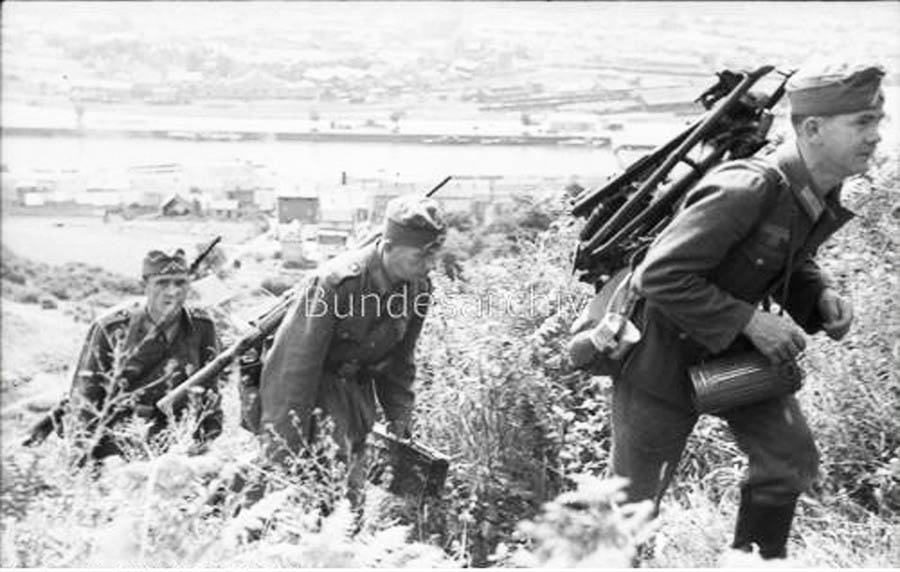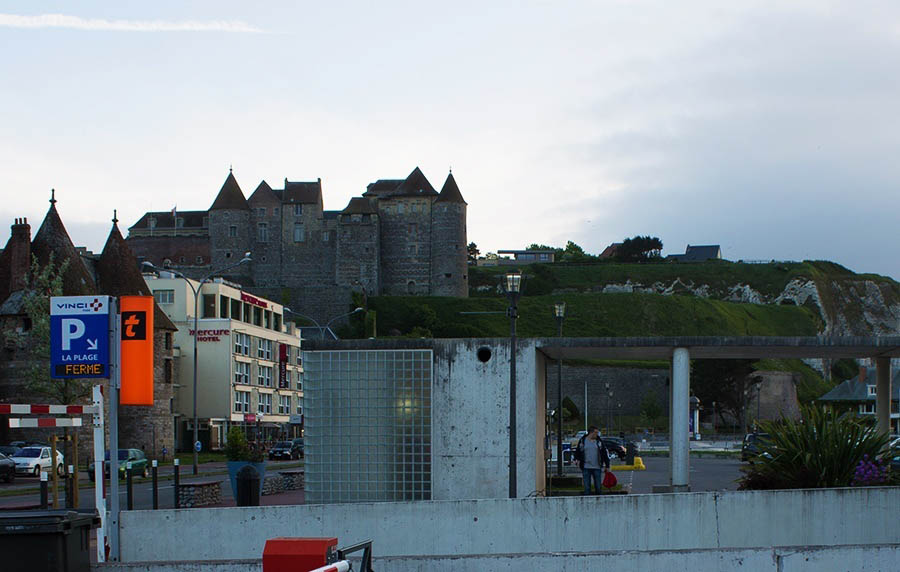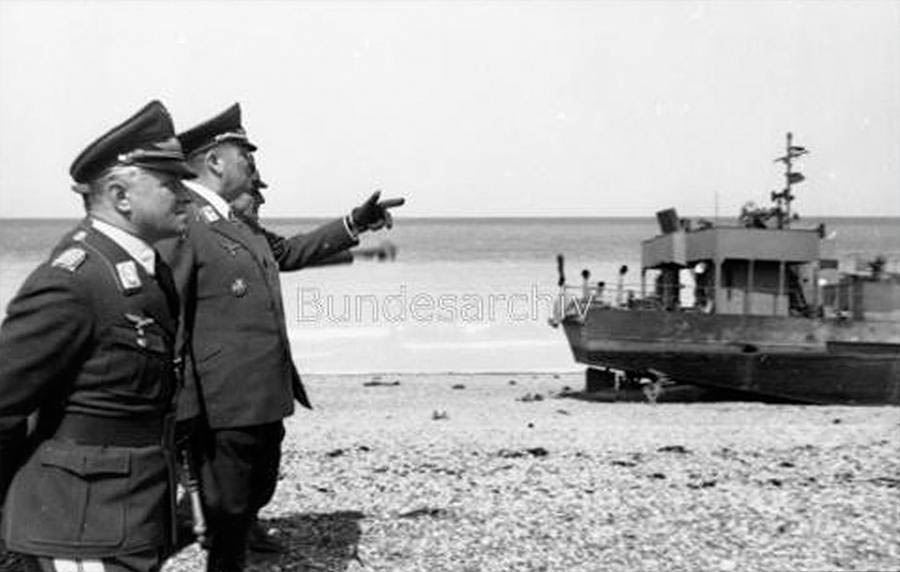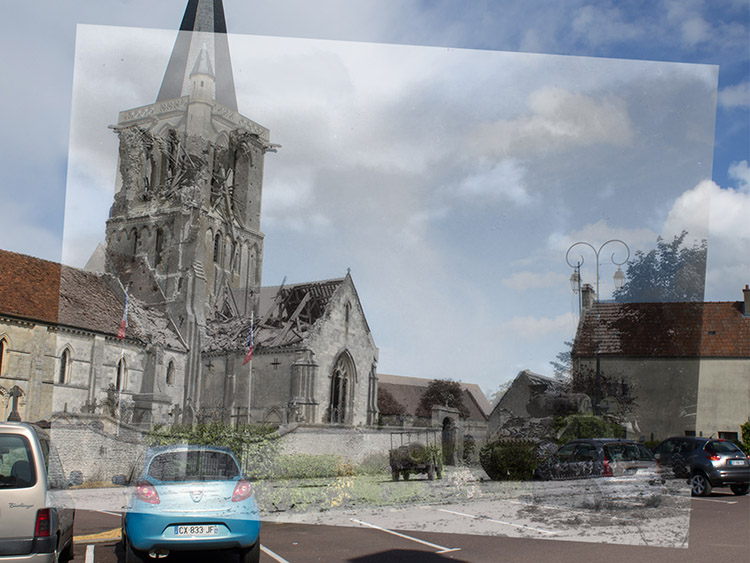Partner City
Dieppe
Canada's Disastrous D-Day Rehearsal
At dawn on August 19, 1942, 6,000 Allied troops, 5,000 of them Canadian, landed at the port of Dieppe. They were launching a raid in force, seeking to prove that a coastal city on the Northwest coast of Hitler's fortress Europe could be taken and held for a short time. By sunset almost 4,000 of those men had been killed, wounded or captured by the Germans. The battered survivors withdrew in disarray and the raid ended in disaster. Freeing Europe from Nazi tyranny was to be no easy task. Yet the lessons learned here at Dieppe would prove essential to the ultimate success of the Normandy landings two years later. As Winston Churchill was to say, the raid "was a Canadian contribution of the greatest significance to final victory."
Explore
Dieppe
Then and Now Photos
Germans on the Hill
Bundesarchiv Bild 101I-291-1201-04A
1942
German troops on exercises in the hills above Dieppe. The small port facing the sea was bracketed by steep chalk cliffs honeycombed with German bunkers and defensive positions.
Sfaff Officer's Car
Bundesarchiv Bild 101I-291-1232-04
1942
A German staff officer is driven through the streets of Dieppe. The Germans were well prepared for the assault and had been put on high alert in the run-up to August 19, tipped off by French double-agents that the British were showing increased interest in the area.
Fallen at Puys
Bundesarchiv Bild 101I-291-1230-13
1942
Canadian dead at Puys. You can see two German bunkers on the cliff in the background which were able put enfilade fire down on the beach. There was no cover for the men when they reached the seawall.
Burning Landing Craft
Bundesarchiv Bild 101I-291-1229-17A
1942
German troops walk up and down the beach on the afternoon of August 19 as a pall of smoke rises from a destroyed landing craft. The Germans were intent on turning Dieppe into a propaganda victory and immediately dispatched photographers to the battlefield to record the event. All these photos were taken by a German propaganda company.
Inspecting the Dead
Bundesarchiv Bild 101I-291-1237-07A
1942
A German officer inspecting the battlefield stands over two Canadian soldiers shot down in front of a strand of barbed wire. The Essex Scottish and Royal Hamilton Light Infantry landed first on the beach and their armoured support arrived late. They faced withering machine-gun and mortar fire from the bluffs overlooking the beach and from within the town itself. Most were killed or captured.
Knocked out Churchill
Bundesarchiv Bild 101I-362-2211-12
1942
Two knocked out Churchill tanks and an armoured car are stranded on the beach. This was the debut of the Churchill tank but the pebble beaches made it easy for them to become bogged down. You can see that the pier has been extended sometime since 1942.
Bogged Down Armoured Car
Bundesarchiv Bild 101I-362-2211-02
1942
This picture of an armoured car sunk to its axles in the pebble beach dramatically illustrates the difficulties posed by the beach conditions. During the Normandy invasion two years later all the major landing beaches were hard-packed sand, easy for men and vehicles to rapidly cross.
Churchill in a Ditch
Bundesarchiv Bild 101I-362-2209-14
1942
A Churchill tank stuck in an anti-tank ditch at the end of the beach. Today the spot is the site of a promenade.
Churchill "Bert"
Bundesarchiv Bild 101I-291-1207-05
1942
Some tanks did make it off the beach, like Bert here, only to find all their routes of advance into the town blocked by anti-tank obstacles. They were forced to turn around and drive back and forth firing on German positions until knocked out or their crews forced to surrender. None of the tank crews landed on Dieppe made it back to England. The twin medieval towers in the background are now a museum commemorating the Dieppe Raid.
Inspecting a Churchill
Bundesarchiv Bild 101I-291-1237-04A
1942
German troops inspect the same Churchill. In the background can clearly be seen the Chateau Dieppe, a 12th Century castle that overlooks the town. You can get an idea of how light the preliminary bombardment must have been by how little the castle has been damaged.
Inspecting a Churchill (2)
Bundesarchiv Bild 101I-362-2206-24
1942
A third shot of Bert. Though most of the buildings on the waterfront have changed the church spire in the background can act as a reference point.
German Commanders on the Beach
Bundesarchiv Bild 101I-362-2209-14
1942
German generals tour the beach after the battle.
Fallen in the Water
Bundesarchiv Bild 101I-291-1237-07A
1942
Fallen Allied soldiers float in the surf on the beach.
Abandoned Landing Craft
Bundesarchiv Bild 101I-362-2206-29
1942
German troops inspect a destroyed Allied landing craft on the spot where a French family enjoys the beach today.
Canadian Pipe Band
1944
Pipers from the Essex Scottish lead a parade through newly liberated Dieppe two years later. Many of the survivors of the raid in 1942 reentered the port in 1944, this time as victorious liberators.
Canadian Liberation Parade
1944
Thousands of French civilians turn out to cheer men of the 2nd Canadian Division as they march past Dieppe's town hall.











































